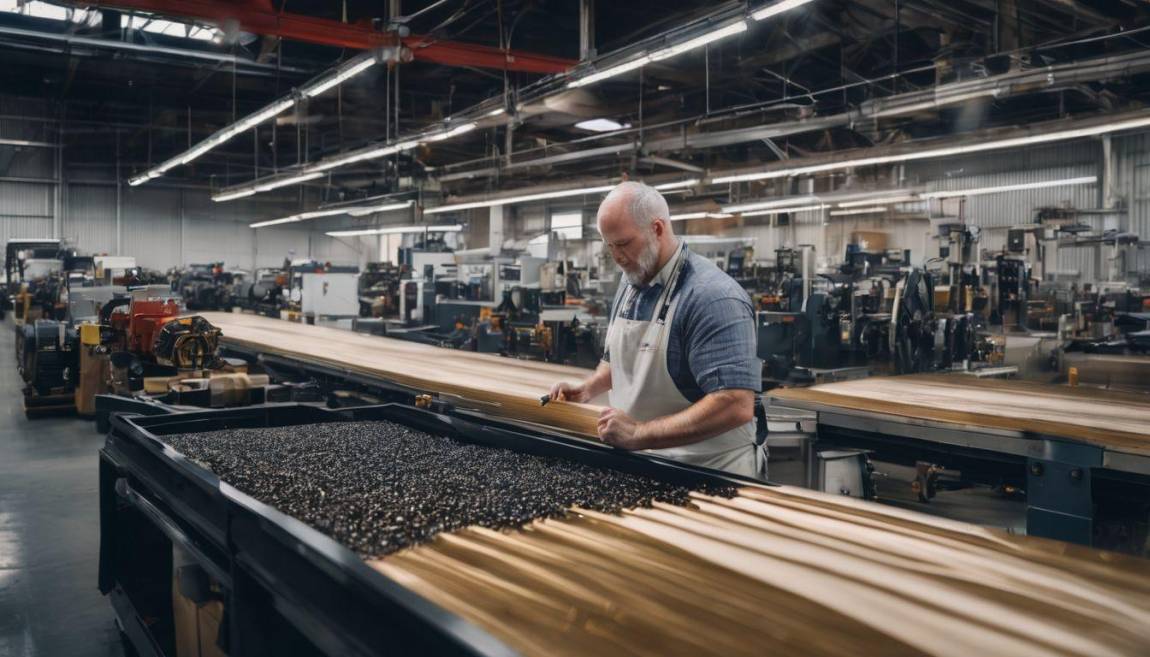As a small or medium-sized business owner, you might be all too familiar with the juggling act that comes with navigating complex global supply chains. It's no easy feat – believe me, I've navigated these waters myself.In fact, I continue to struggle with it every day - from the moral desire to help those in my own community to the sacred obligation that I have to my wife and family to run a business that makes enough profit to provide for them. Onshoring vs offshoring isn't as complicated as it might initially sound though and it is also something that every business owner of any size must consider as they move forward with financial planning for 2024 and beyond!
The concept of onshoring—where businesses invest back into our own local markets — has become a powerful tool in my arsenal. This post is set to peel back the layers on how bringing operations closer to home can not only open up exciting new doors but also trim down costs and bolster our community at large.
So, let’s dive right in and explore if this strategy is right for you.
What is Onshoring?
Onshoring is the practice of bringing manufacturing operations and processes back to a company's home country. It involves domestic sourcing, local manufacturing, and sustainable procurement practices. However, while it is widely considered a manufacturing concept - services businesses need to consider these options and opportunities as well. Whether you are a cardiologist in Toledo, OH, who relies on a team in India to read lab results or a blogger in Michigan who works with a team of writers in India,... we live in a global community today, and there are real barriers except those that governments place in front of us.
This trend has been gaining momentum as US companies seek cost-effective and efficient ways to produce goods while contributing to local economic development and job creation.It is also currently being driven by political forces against countries like Russia and China as well as globally a response to the failures of international supply chains during the COVID-19 panedemic.
How it works
Onshoring involves relocating business operations back to the company's home country. It works by investing in domestic production and sourcing, which aligns with local economies and contributes to community growth.
As companies focus on meeting market demands and improving customer satisfaction, onshoring enables responsiveness, reduces shipping times, and supports sustainability goals. This process allows businesses to cut costs such as taxes and production while enhancing their core operations.
Onshoring also drives direct job creation within your home country, contributing to a potential manufacturing resurgence driven by market needs.
However, it shouldn't be ignored or forgotten that "cheap labor" and "cheap goods" from overseas have also allowed us to have a sense of prosperity that is unparalleled in history. For instance, Since I can spend less on office furniture and make more profit, that's more money that I can spend on travel, going out to eat, and supporting local not-for-profit organizations too.
Impacts and Opportunities for Small and Medium-Sized Businesses
Shifting towards onshoring can provide small and medium-sized businesses with significant benefits, including reduced transportation costs, faster turnaround times, and improved quality control.
However, challenges such as higher labor costs and potential supply chain disruptions need to be carefully considered and addressed for successful onshoring implementation.
Benefits of onshoring
Onshoring offers significant benefits to small and medium-sized businesses. It enables improved responsiveness, reducing shipping times, and meeting the demand for locally made products.
This not only aligns with consumer preferences but also supports sustainability and local sourcing goals, contributing to the growth of local economies and communities. Additionally, onshoring allows companies to focus on their core business by cutting costs associated with taxes and production while aligning manufacturing operations with market needs, ultimately leading to improved customer satisfaction.
Furthermore, onshoring presents opportunities for a manufacturing resurgence in the US driven by development and market needs. This shift towards domestic investment empowers companies to adapt their manufacturing operations efficiently and effectively within an ever-changing marketplace.
Regulatory and legal benefits
Onshoring offers regulatory and legal benefits for small and medium-sized businesses. It allows companies to comply with domestic laws, regulations, and standards more effectively.
By operating within the country, businesses can ensure adherence to labor laws, environmental regulations, and quality control measures required by local authorities. This helps in minimizing the risks associated with international trade agreements and mitigates potential legal disputes related to offshore operations.
Moreover, onshoring provides a competitive advantage through intellectual property protection. Companies can safeguard their innovations under domestic patent laws which may offer better enforcement mechanisms compared to offshore jurisdictions.
Challenges and how to overcome them
As a small or medium-sized business considering onshoring, one major challenge is finding skilled labor locally due to previous offshoring practices. Overcoming this involves investing in training programs and partnerships with local educational institutions to develop a homegrown workforce.
Another obstacle is the initial investment required for onshoring. To tackle this challenge, businesses can explore government incentives, tax breaks, and financing options tailored to support domestic production initiatives.
Predicted Trends and the Future of Onshoring
The future outlook for onshoring is positive, with potential long-term impacts on manufacturing and businesses. To learn more about how to prepare and adapt to the onshoring shift, keep reading!
Future outlook for onshoring
The future outlook for onshoring appears promising, with more small and medium-sized businesses considering the benefits of bringing production back to domestic markets. This shift is driven by a desire for greater control over quality and supply chain, as well as the need to meet evolving consumer preferences for locally made products.
Onshoring is anticipated to continue gaining momentum, especially in industries where sustainability and community support are valued. As companies strive for agility and resilience in their operations, onshoring presents itself as an attractive option that aligns with these goals.
Potential long-term impacts on manufacturing and businesses
Onshoring has the potential to lead to a resurgence in manufacturing and drive economic growth for businesses. This shift can bolster local economies, create jobs, and reduce dependence on foreign markets.
With increased domestic production, companies can become more resilient to global supply chain disruptions, leading to stability and security in the long term. The predicted trend of onshoring presents an opportunity for businesses to adapt their operations and tap into the benefits of local sourcing.
By bringing production closer to home, companies can mitigate risks associated with international trade tensions and geopolitical instabilities while aligning with consumer preferences for locally made goods.
How to prepare and adapt to onshoring shift
To prepare for the onshoring shift, I must assess market needs and consumer preferences. Understanding these aspects enables me to align my manufacturing operations with what the market demands, leading to improved customer satisfaction.
Additionally, focusing on local sourcing goals supports our communities and economies while tapping into the benefits of onshoring such as reduced shipping times and tax savings.
By investing in technology and infrastructure, I can adapt to the onshoring trend. This investment helps in enhancing responsiveness and streamlining production processes. Furthermore, building strong relationships with local suppliers is crucial for a successful transition towards onshoring as it supports diversity goals and contributes to sustainability efforts within our business operations.
Conclusion OnShoring Isn't A Simple Choice
In conclusion, onshoring presents significant opportunities for small and medium-sized businesses. It allows companies to align manufacturing with market needs, leading to improved customer satisfaction. These core benefits are typically consistent across different enterprises but almost every business that I've worked with as a consultant over the years sees a different result from a long range POV.
For instance, a manufacturing client of mine moved his production from China to the United States and trained immigrant migrant labor to do the work that his team in China once did. Initially this was more expensive but the cost savings when a container doesn't get caught in a port delay or extended inspection by Customs and more than offset the price of maunufacting itself.
Similarly, that flexibility of knowing that you can act nimbly and move fast is also a way to save on the bottom line even if may but moe expensive on some line items.
Finally there's the issue of deciding exactly what and how much to onshore. For instance, are you ok purchasing parts from China, maybe the wiring harnesses too? Or do you want to make everything here in the United States or a more friendly nation that is closer to us like Mexico. Let's take the case of Lily-Bearing, a bearing manufacture based in China. They may be the best choice for your business to continue working iwtul. So, don't just go and pick someone else closer - your business and reputation depend on continuing to foster your fans, the healthy face, and car keadehuo that you're known for.
Moreover, onshoring supports local economies and communities by sourcing business processes and manufacturing closer to home. As the trend of onshoring continues to evolve, it's essential for businesses to adapt and prepare for the potential long-term impacts in order to reap its benefits fully.
Hey James Hills wants you to share this!

